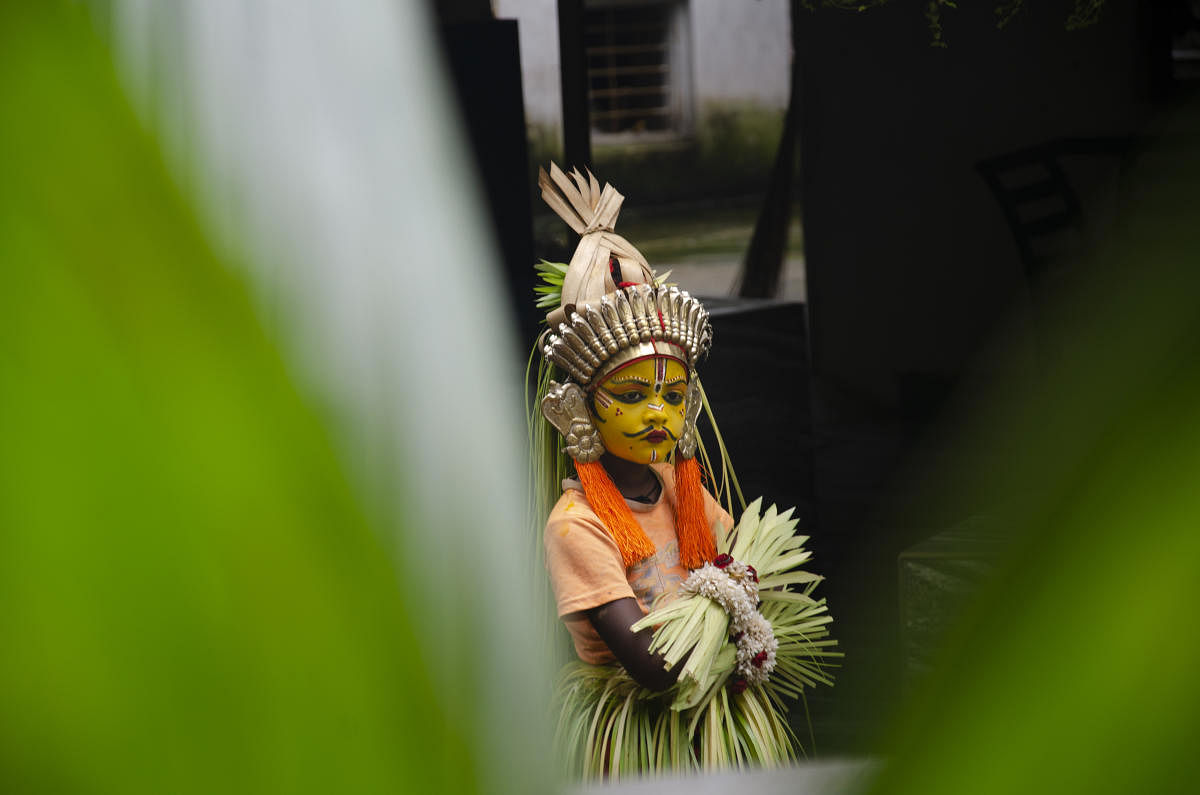

The traditions of Tulunadu are seasonal and connected deeply with the demography of Karnataka’s coastal region. The fundamental idea behind all Tulunadu traditions is their relevance to everyday life. The Tuluvas have managed to add aesthetic and cultural value to their practices.
Some seasonal rituals like Mankaali and Sonada Jogi started off as practices to support the lifestyle of certain communities. However, they are slowly fading because they hold little relevance today. These practices can still be found in some regions because of community efforts to carry on the tradition. Aati Kalenja is one such example.
The season of ‘aati’ usually ranges from July to mid-August, a time of ruthless rainfall. Tulunadu experiences a fierce monsoon every year.
Protective rituals
It is believed that the guardian spirits (daiva) of Tulunadu, the protectors of the land, go into hibernation or visit other places during aati. Their shrines are hence kept closed for one month. During this time, a young lad from the Nalike community, clad in a coconut sheath, steps in to perform the protective rituals.
The story goes that during aati, the spirit of nature, kalenja, comes down to bless and protect the people. This wandering force is represented by a boy who visits homes wearing a bright costume and a headdress known as kadirumudi, laden with tender coconut leaves (siri), and holding an umbrella made of dried coconut leaves.
Kalenja is accompanied by a person who holds a thembare, a percussion instrument which they play as they sing the pad-dhana (Tulu folk song). At every home, the accompanying person sings, and the boy dances with light movements to the rhythm of the pad-dhana, twirling his umbrella and keeping his painted face expressionless. It makes for a delightful sight.
The ritualistic folk dance is believed to siphon out the evil and illness that is believed to reside within homes. The season of aati usually sees a rampage of illness because of the unyielding weather, so kalenja is welcomed with hope at every home. After he completes his ritual, the homeowners give him rice with some vegetables, tamarind, turmeric and a piece of charcoal.
The Nalike community
While nowadays, people prefer giving money, tradition prescribes the items mentioned above for their universal presence in Tuluva households. These ingredients once sustained the lives of the Nalike community which consisted of daily-wage employees, who struggled to find work during peak monsoon. Aati Kalenja helped them in their time of need.
In recent times, many Nalike
people too, do not find it necessary to carry out this ritual because they are no longer dependent on it for sustenance. But some families have kept the tradition alive for its beauty and cultural value.
The practice goes on for thirty days every aati season, and many pre-teenage and teenage boys from the Nalike community are involved. Every day, they let an elder from the household paint their face with yellow paint and artistic detailing. They don bright attire and freshly-procured siri, and visit all the homes in their village.
The Nalike community stands at the centre of almost all native rituals of Tulunadu that connect to spirit worship. They are connected with nature and are aware of the seasonal requirements of their livelihood. They are skilled at tasks such as procuring siri and using it to design decorative items. They are also adept at performing all rituals pertaining to spirit worship.
The Nalike people are welcomed into all households due to the belief that they are skilled at withdrawing evil and illness. Many Tuluvas embrace such beliefs and adhere to them. Hence, despite its fading utility and practicality, Aati Kalenja remains both relevant and welcome in Tulunadu’s homes.